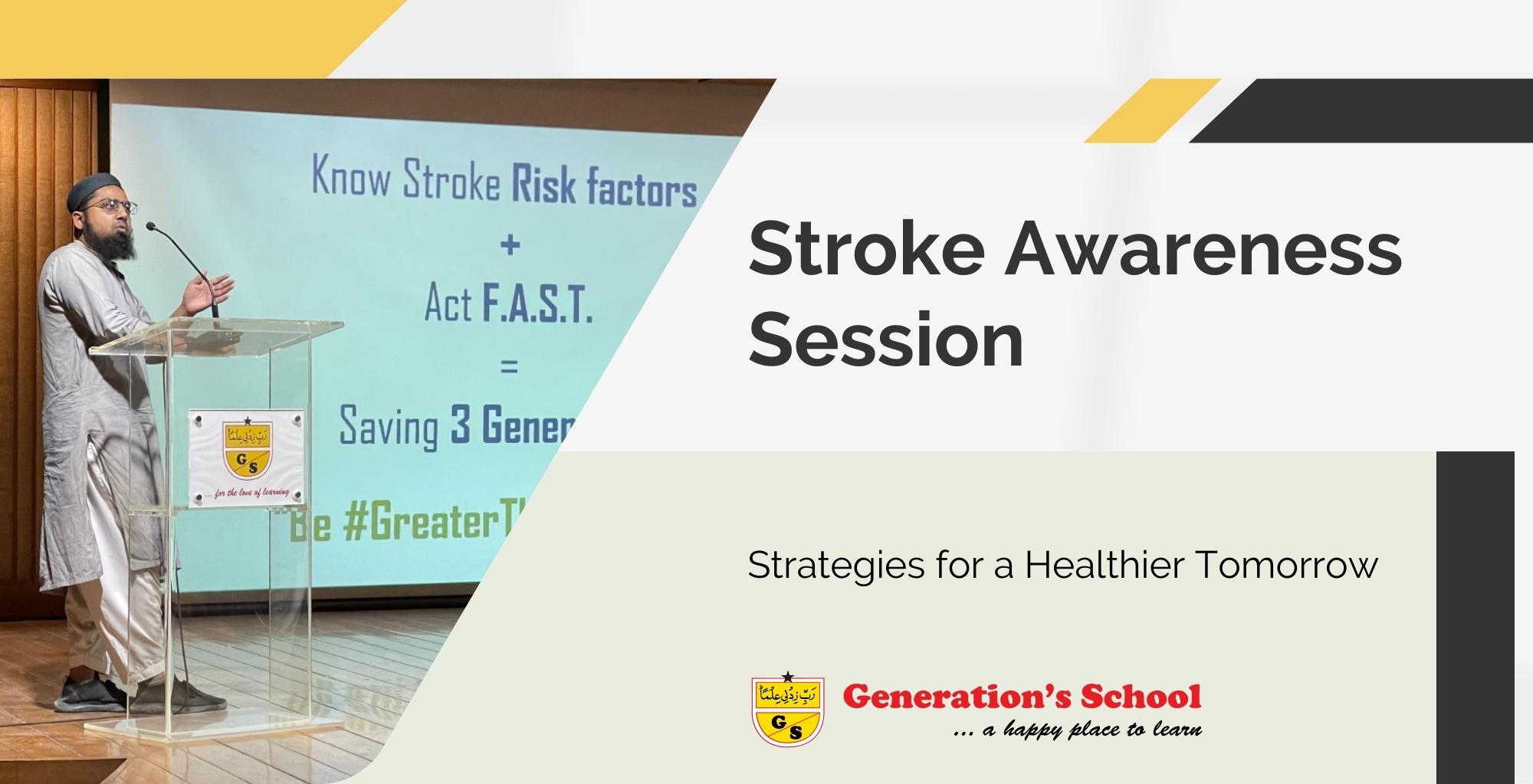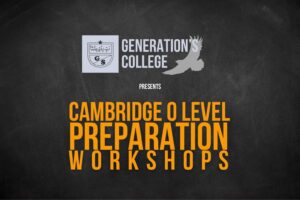Empowering Our Community Against Stroke
Strategies for a Healthier Tomorrow
In a proactive effort to prioritize the well-being of our staff, a comprehensive Stroke Awareness session was recently conducted for the staff of Generation’s School. The aim was to provide a deep understanding of stroke, its various types, potential causes, distinctive symptoms, and the recommended actions to be taken upon its onset. The session, facilitated by experts in the field, shed light on critical signs of a stroke and emphasized essential dos and don’ts during such circumstances.
Dr. Salman Farooq at the South Campus, Dr. Faizan Memon, Consultant Neurologist at the United Medical College, along with Dr. Saud Khan, Stroke Director at Titus Regional Medical Center in Texas, led the sessions in the North Campus. Their expertise enriched the sessions, ensuring our staff gained valuable insights into stroke prevention, recognition, and response.
What is Stroke?
Stroke, commonly known as a brain attack, is a major disabling disease worldwide. It occurs when the blood supply to the brain is interrupted either due to a clot or hemorrhage, resulting in weakness (paralysis) of some part of the body.
The leading causes, high blood pressure and diabetes, are linked to a lack of exercise and an unhealthy diet, emphasizing the significance of preventive measures.
What to do when a stroke happens?
The very first thing is to identify the symptoms. Remember the acronym FAST: Facial weakness (F), Arm weakness (A), Speech Difficulty (S), then Act Fast (F). There is a four-and-a-half-hour window in which if the patient gets the right treatment, a stroke can be completely cured.
Early identification of symptoms and prompt action within the critical time frame can be life changing. The urgency is clear: act fast to potentially cure a stroke.
How to act fast?
Take the patient immediately to the nearest hospital where at least a CT Scan facility or preferably MRI facility is available. On a CT scan, a hemorrhage can be ruled out, and now with the most probable diagnosis of a clot, the patient can be given a clot-buster injection (tPA) after careful evaluation of the patient’s condition.
If a patient couldn’t get the right treatment on time and suffers from paralysis, hope is still alive. Aggressive physiotherapy, proper medication, and family support can bring the patient back to life with minimal disability. This improvement continues throughout if hope is not given up.
The experts’ message of hope echoes the importance of ongoing support and rehabilitation, even in challenging circumstances. It’s a reminder that recovery is possible with dedication and the right resources.
So be prompt to start with the daily walk, a healthy diet, and a simple lifestyle to avoid the FAST approach in your life.
The insights shared during the Stroke Awareness session are not just information; they are tools for enlightenment and well-being for our educators.
—
Dr. Samreen Asad
Medical Officer
Generation’s School
—
Commending the invaluable contributions of Dr. Samreen Asad, a Dow Graduate and MRCOG-1, who serves as the dedicated Medical Officer at Generation’s School. With a focus on the health and welfare of students and staff, she orchestrates engaging well-being sessions infused with expertise in mind sciences. Her commitment seamlessly aligns with Generation’s policy of prioritizing physical and mental health. Dr. Samreen’s impactful video series, ‘Well-being in Summer’, stands as a beacon of support, empowering the Generation’s community.





